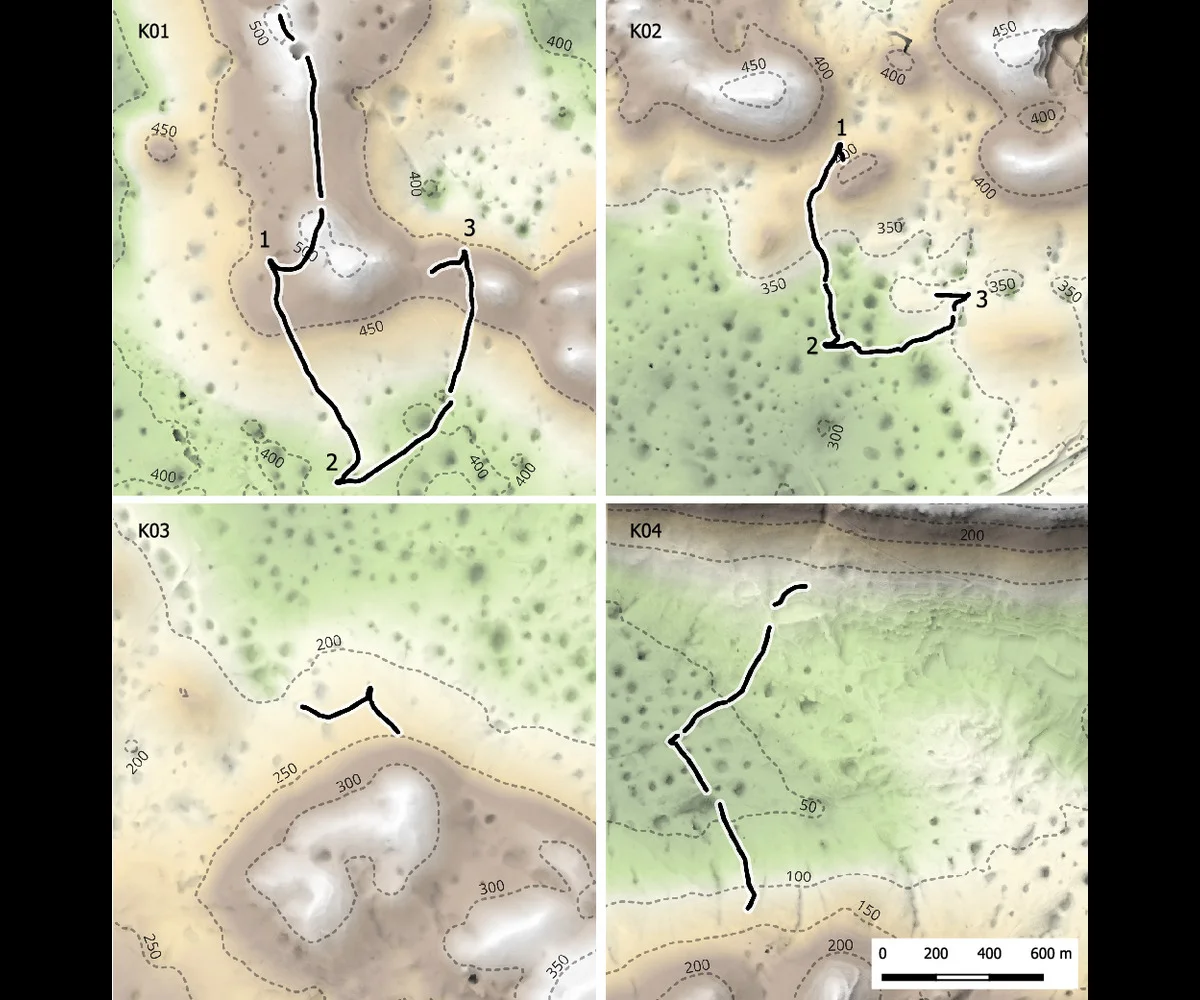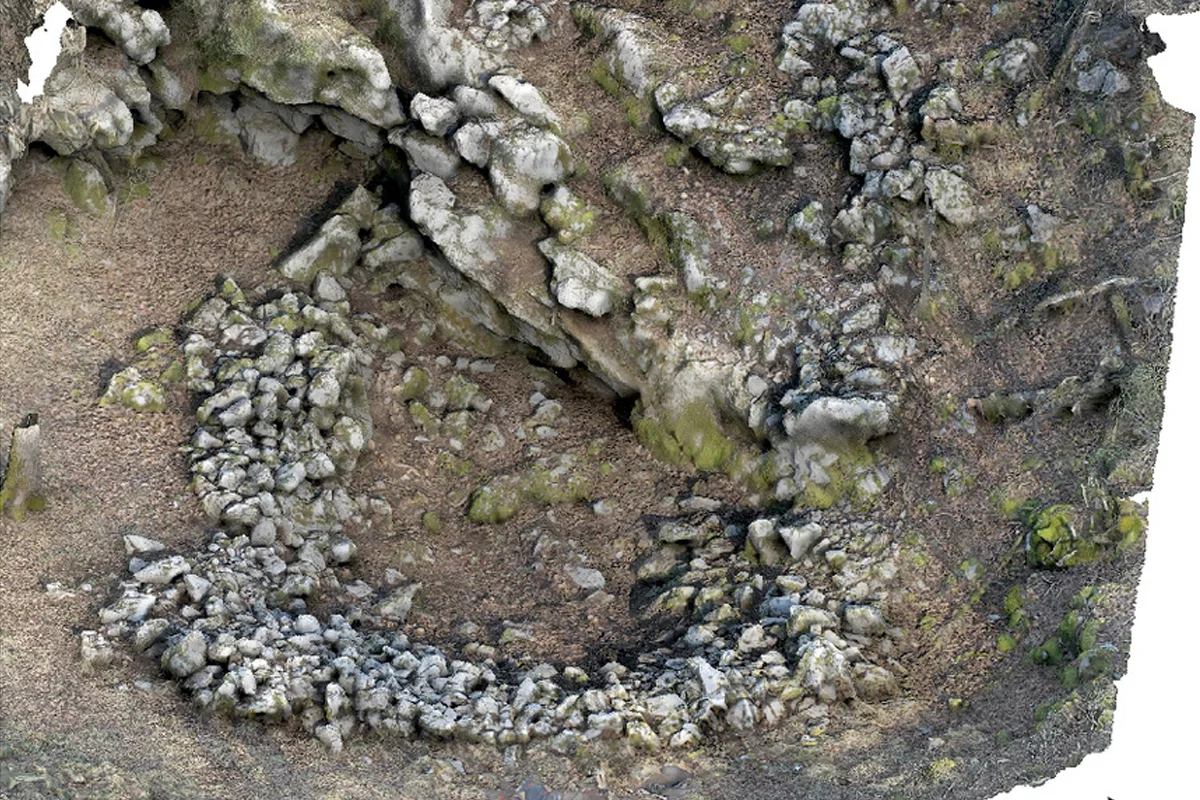An airborne laser survey on the Karst Plateau of the Adriatic hinterland has led to the discovery of previously unknown dry-stone megastructures.
The results of the study, published in the Proceedings of the National Academy of Sciences (PNAS), has identified four megastructures – designated K01, K02, K03, and K04 – using airborne laser scanning (ALS) across an area of roughly 870 square kilometres.
The structures are characterised by funnel-shaped alignments and concealed enclosures, likely used to guide and trap herds of wild animals such as red deer and other ungulates. Each structure has long, low stone walls that converge into deep, pit-like enclosures nestled beneath cliffs or in natural sinkholes known as dolines.
According to experts, the discovery represents a new form of large-scale hunting infrastructure which is unlike anything seen before in Prehistoric Europe.
“Their architectural scale, complexity, and integration with the terrain suggest a high degree of communal organization, landscape knowledge, and planning. Although direct dating remains inconclusive, associated stratigraphy indicates they were abandoned before the Late Bronze Age, pointing to a potentially earlier origin,” said the study authors.

Radiocarbon dating of charcoal fragments from one site indicates that the structures were abandoned before the Late Bronze Age, likely placing their use in the pre- or early Bronze Age, or possibly even the Mesolithic period.
At that time, the Karst Plateau was an open, grass-dominated landscape—ideal for long-range visibility and herd management. As forests later reclaimed the plateau, these vast constructions were gradually buried and forgotten.
Beyond their archaeological novelty, the findings have profound implications for how prehistoric societies in Europe organiSed labour and used their environment.
Constructing the largest structure, whose walls span over 3.5 kilometres, would have required socially coordinated groups capable of sustained, large-scale effort. Such undertakings blur the conventional boundary between small forager bands and later agricultural communities.
Header Image Credit : PNAS
Sources : PNAS





